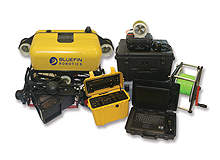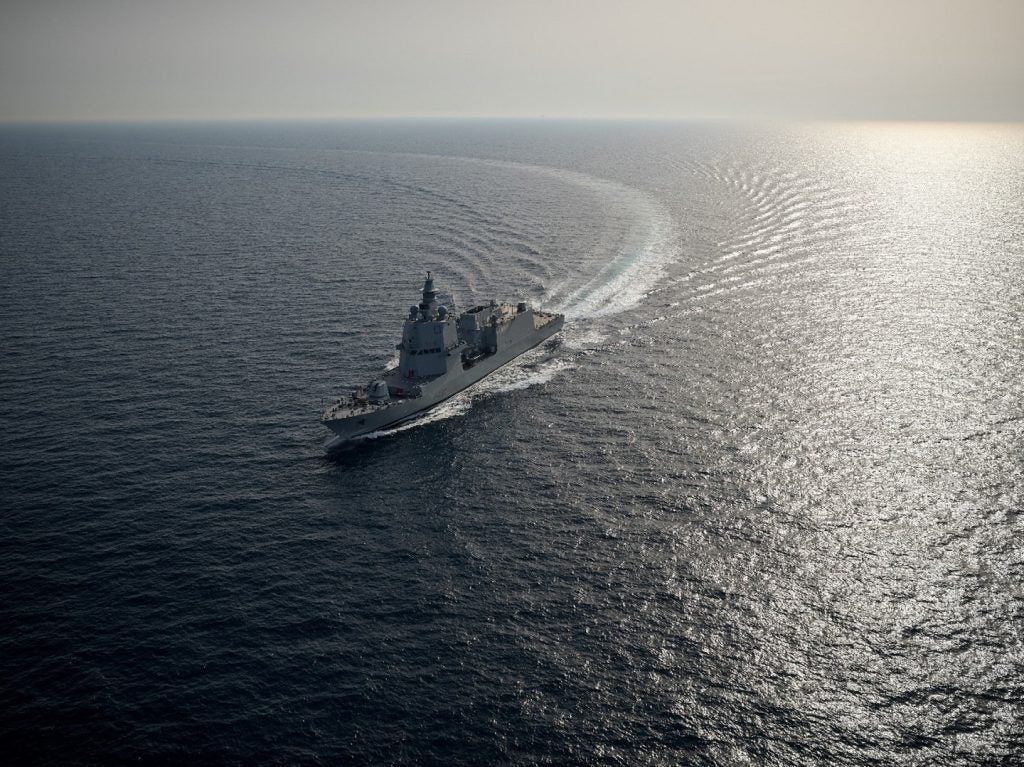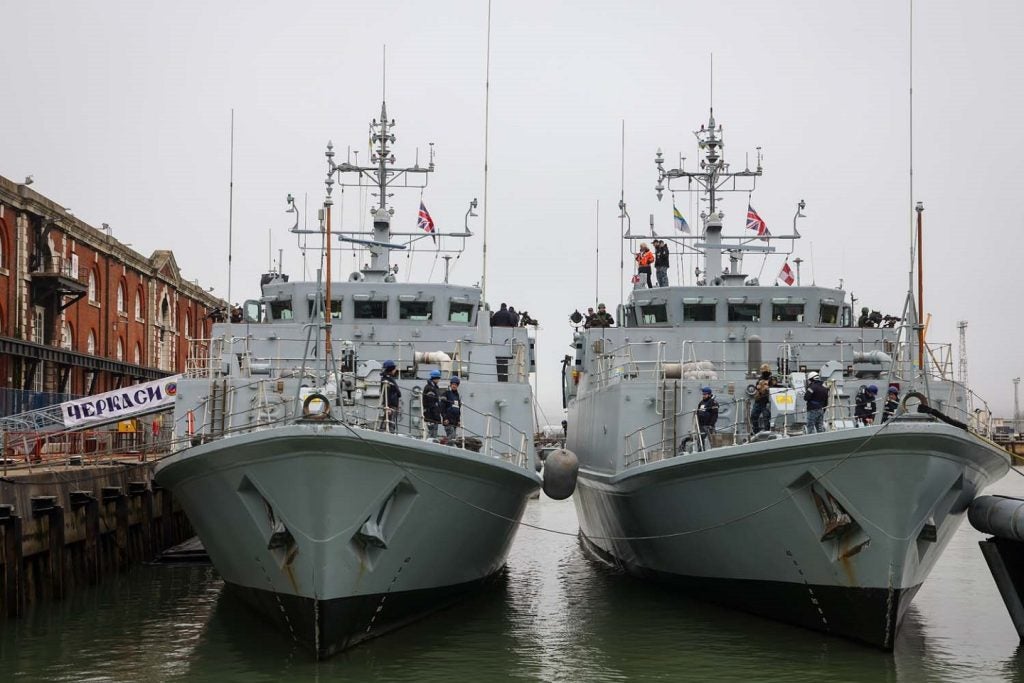
As the global robotic revolution continues apace, a new automatic frontier is opening across a range of industries and research fields. Automated units are now being used for tasks ranging from assembling cars to assisting in major surgeries.
These intelligent machines have the advantage of removing humans from menial or potentially hazardous tasks.
The genesis of naval automated underwater vehicles lies in the 1950s and 1960s, when fleets began to deploy remotely operated underwater vehicles (ROVs) for a range of tasks.
In the 1950s the British Royal Navy used an ROV called Cutlet to recover practice torpedoes, and the US Navy similarly employed ROVs from the 1960s to recover materials from the ocean floor.
How well do you really know your competitors?
Access the most comprehensive Company Profiles on the market, powered by GlobalData. Save hours of research. Gain competitive edge.

Thank you!
Your download email will arrive shortly
Not ready to buy yet? Download a free sample
We are confident about the unique quality of our Company Profiles. However, we want you to make the most beneficial decision for your business, so we offer a free sample that you can download by submitting the below form
By GlobalDataBut the addition of genuine automation to unmanned underwater vehicles has been a more gradual process, with autonomous underwater vehicles (AUVs) finding some genuine naval applications only recently. Military applications for AUVs include mine countermeasures or detection operations.
See Also:
Hull inspection: the remote option
Since the 1980s, increasingly sophisticated unmanned underwater vehicles have emerged as a viable alternative to traditional navy divers for naval hull inspection and survey tasks. These inspections are important from a maintenance perspective, but also from a security standpoint, in detecting foreign objects like limpet mines.
As far back as two decades ago, the US Navy began introducing ROVs for hull inspection and maintenance tasks. Naval inspection ROVs are based on camera technology, the underwater unit transmitting images of a ship’s hull to an operator controlling the vehicle from above the water’s surface.
US Navy Underwater Ship Husbandry (UWSH) division spokesperson Colleen E O’Rourke elaborates on the role ROVs have played in inspection and maintenance of US Navy vessels. “There are various forms of inspections that ROVs can conduct to assist in the assessment and planning of maintenance,” she said.
“One utility for an ROV is to conduct quick cursory inspections of the hull or underwater components for debris or damage. This can be done in less time than with a full team of divers and can be very economical.
“The other utility of an ROV is for precise measurement of ships systems – hull plate and coatings, for example – which is performed by complex instrumentation mounted on an ROV and software to acquire and track the measurement. This method can efficiently survey a ship’s hull faster than a team of divers. The use of ROVs to conduct inspections in contaminated water is also an advantage, mitigating the risk of putting a diver in the contaminated water.”
Although using ROVs offers a range of benefits, some drawbacks have severely limited the use of these vehicles in the US Navy’s underwater maintenance operations. Because the devices lack any automation or intelligence, the quality of an ROV-conducted hull survey is perhaps too dependent on environmental conditions and operator skill.
“The breadth of the inspection results is limited to the narrow view of the ROV’s camera system and the aptitude of the ROV pilot,” says O’Rourke.
As a result, the world of naval inspection has until now remained dominated by highly trained teams of navy divers.
Time for an automated revolution?
This situation could be on the brink of a great, technology-driven shake-up with the introduction of AUVs to hull inspection. This introduction has, for the most part, been spearheaded by the Office of Naval Research (ONR), which identified the benefits of an automated hull inspection unit and researched the concept, as well as contractor Bluefin Robotics, which has been working on testing, prototyping and putting a hull inspection AUV into production since 2002.
The EOD HULS (explosive ordinance disposal hull unmanned underwater vehicle localization systems) programme evolved from a 2002 contract between ONR, Bluefin and the Massachusetts Institute of Technology (MIT) to develop a hovering autonomous underwater vehicle (HAUV).
When the HAUV project was switched to EOD HULS in 2006, Bluefin began the lengthy process of prototyping the system, improving its design based on feedback from user testing.
In the last year, Bluefin has started production on the first full system, and has now received an order for a second system.
The most obvious benefit of an AUV over both divers and ROVs is its ability to navigate autonomously, intelligently maintain a steady distance from its target and use sensors to survey a ship’s hull, not reliant on either human eyes or a camera lens. “If you’ve got a man in the loop and you’re in murky waters, they’re doing hand-over-hand, there’s limited visibility,” says Bluefin’s president and CEO David Kelly. “If you use a machine with some greater senses and a greater navigation capability, you should be able to make sure you’ve covered 100% of the hull.”
AUV development: design priorities
Using Bluefin’s AUV, Kelly believes its US Navy users will be able to conduct faster, more consistent hull inspections, with the added benefit of being able to compare the results of multiple surveys by measuring the sensor data from different inspections.
But there were other aspects the company had to consider to develop a practical vehicle.
Key to the project was making the AUV portable, easily deployable and intuitive to operate. The vehicle can be deployed by a two-man team from a rigid-inflatable boat, which allows for a faster reaction time when it is needed in the water. “What we were doing in the production NRE [non-recurring engineering] was looking at some weight reductions to make it more suitable for two men, and also increasing the range of current that the vehicle could operate in,” said Kelly.
“Ideally, they want the platform to be able to operate in the same current regime as the divers have to operate in. We’re working on doing that.”
Making its AUV easy for operators to get acquainted was another top priority for Bluefin. The vehicle was fine-tuned based on feedback during its testing stage to make it a straightforward proposition to deploy. “To start off a survey, the operator provides five pieces of information, and then the vehicle can start. We’re trying to minimise the amount of complication for the operator and automate the tasks that are amenable to automation, as well as providing intuitive tools,” Kelly said. Although he sees AUVs as a complement rather than a replacement for navy divers, allowing humans to dedicate themselves to “functions for which you need human intelligence and common sense, which is extremely difficult to replicate with a machine”, Kelly still believes the capabilities of these vehicles will only expand in the future.
“Right now it will detect if there’s an object or a limpet mine attached to a ship, but the neutralisation function is still carried out by a diver. We’ve actually got a current ONR contract to enable the device to attach a neutralisation capability to any found devices.
“So you’re seeing an evolution. From a ship husbandry perspective, there are things that can be done with hull inspection and hull integrity where you need regular sampling on the hull, and that’s something we’re looking at as well. As the capabilities of the machines advance and the users become more familiar with their capabilities, I think you’ll see an evolution of the machines to get people out of dangerous tasking.”





